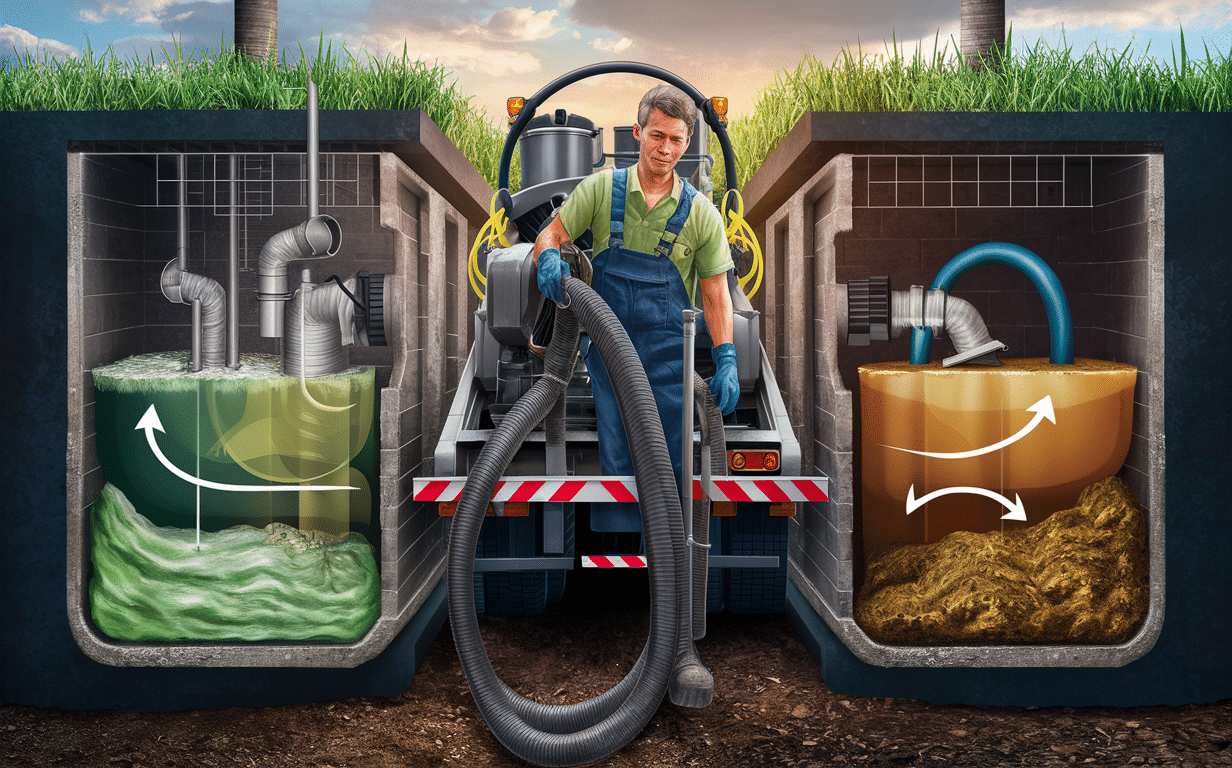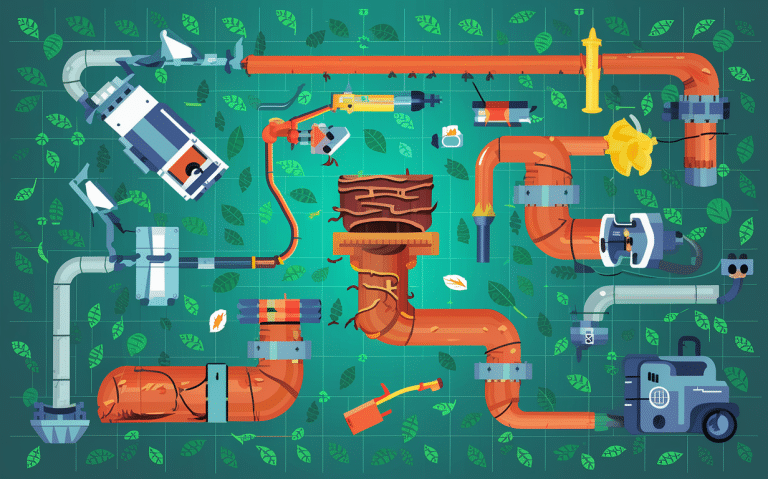Septic Tank Pumping Process: Essential Guide to Maintenance
Septic Tank Pumping Process: Discover why its essential for system longevity, preventing backups, and protecting the environment. Learn why regular maintenance matters.
Maintaining your septic system is crucial for preventing costly repairs and ensuring the longevity of your system. Septic tank pumping is a critical part of this maintenance, as it keeps your system running smoothly and prevents backups and other issues.
Key Takeaways
- Septic tank pumping removes accumulated sludge and scum.
- Regular pumping prevents system failure and costly repairs.
- The process typically involves accessing, pumping, rinsing, inspecting, and closing the tank.
- Professional services ensure thorough and safe pumping.
Why Septic Tank Pumping is Necessary
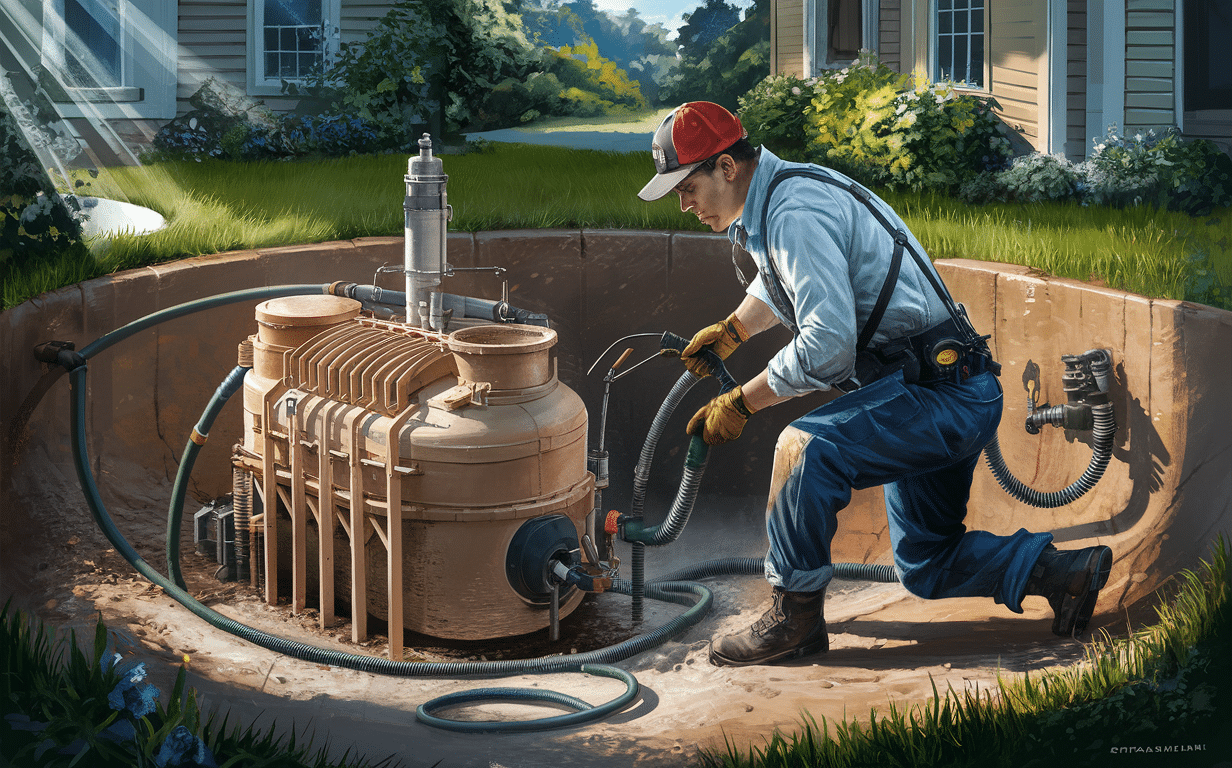
Septic systems work by separating wastewater into three layers: scum (top), effluent (middle), and sludge (bottom). Over time, the sludge and scum layers build up and must be removed to keep the system functioning properly. If left unpumped, these layers can clog the drain field, leading to system failure, backups into the home, and environmental contamination.
How Often Should You Pump Your Septic Tank?
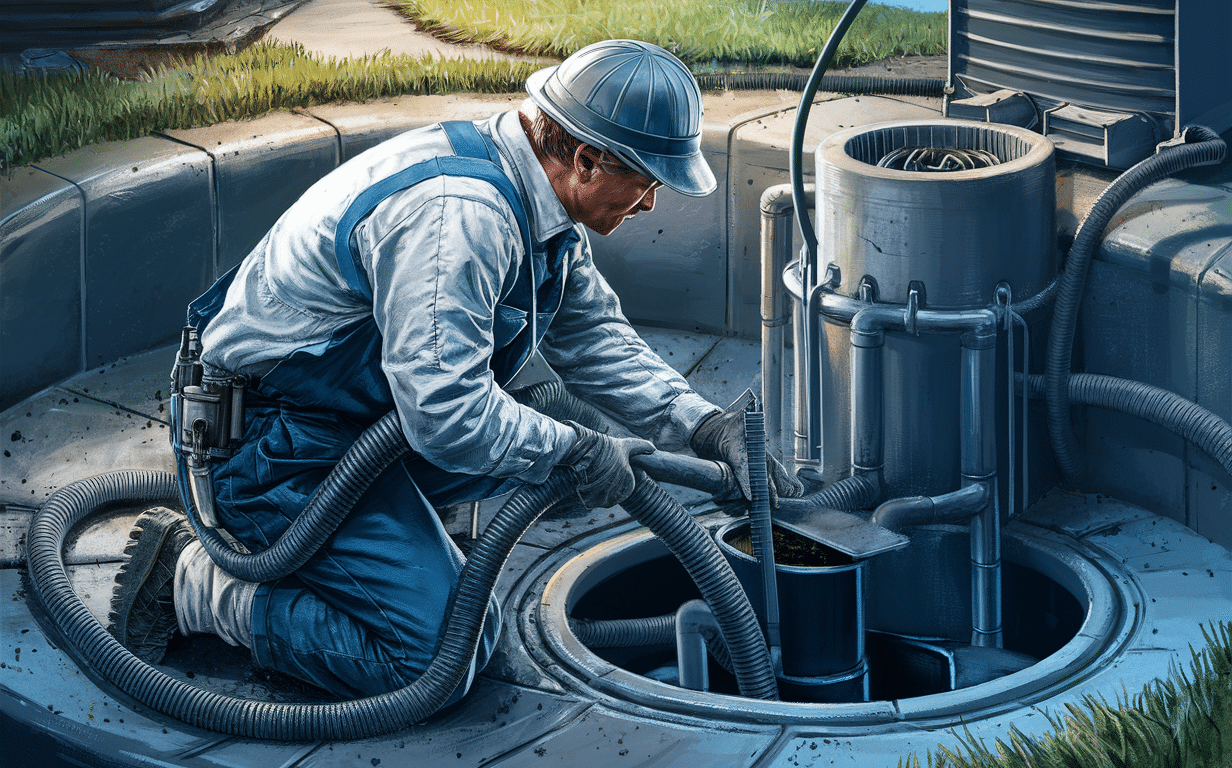
The frequency of septic tank pumping depends on several factors, including the size of the tank, the number of people in the household, and the volume of wastewater produced. Generally, it’s recommended to pump the tank every 3 to 5 years. However, some households may need more frequent service.
Factors Influencing Pumping Frequency
| Factor | Influence on Frequency |
|---|---|
| Household Size | Larger households produce more wastewater, requiring more frequent pumping. |
| Tank Size | Smaller tanks fill up faster and need to be pumped more often. |
| Water Usage | High water usage increases the rate of sludge and scum accumulation. |
| Garbage Disposal Use | Frequent use of garbage disposals adds solids to the tank, increasing pumping frequency. |
The Septic Tank Pumping Process: Step-by-Step
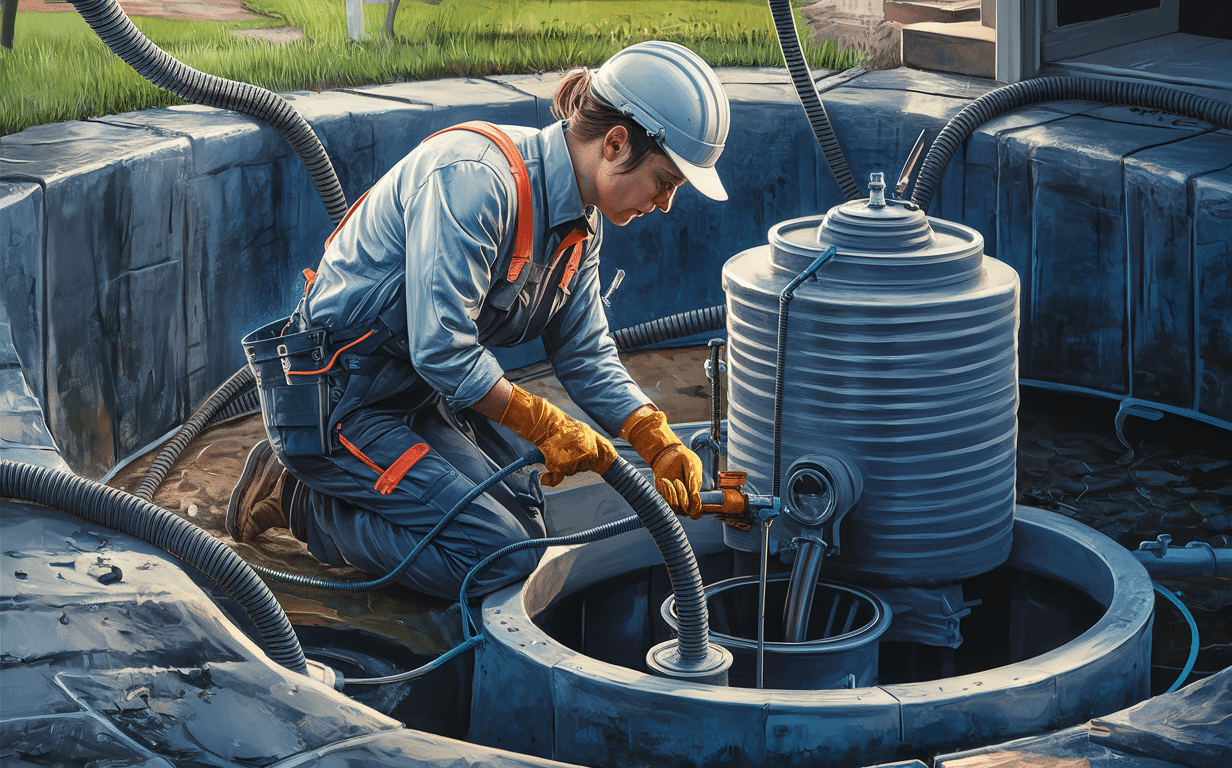
1. Locate and Uncover the Tank
The first step is to locate the septic tank and uncover the access lids. This may involve digging if the lids are buried. Professional services use specialized equipment to make this easier and faster.
2. Pump Out the Tank
A vacuum truck is used to pump out the contents of the tank, removing the sludge and scum layers. The effluent is typically left in the tank to help restart the bacterial process after pumping.
Components Removed During Pumping:
| Component | Description |
|---|---|
| Sludge | Solid waste that settles at the bottom. |
| Scum | Grease and oils that float to the top. |
| Effluent | Liquid waste that exits the tank. |
3. Rinse the Tank
After pumping, the tank is rinsed to remove any remaining solids. This step ensures that the tank is thoroughly cleaned, allowing for better inspection and improved system performance.
4. Inspect the Tank
A visual inspection is conducted to check for any signs of damage, such as cracks or leaks. This step is crucial for catching potential issues early and preventing costly repairs down the line.
5. Close and Rebury the Tank
Once the inspection is complete, the tank is closed and any excavated soil is replaced. The area is cleaned up to leave the site as it was before the pumping process.
Benefits of Regular Septic Tank Pumping

Regular septic tank pumping offers several benefits, including:
- Preventing system backups: Regular removal of sludge and scum prevents blockages that can cause backups into your home.
- Extending system life: Proper maintenance can extend the life of your septic system, saving you money in the long run.
- Protecting the environment: Preventing leaks and overflows protects local waterways and soil from contamination.
- Avoiding costly repairs: Routine maintenance helps identify and address minor issues before they become major problems.
Signs Your Septic Tank Needs Pumping

It’s important to recognize the signs that your septic tank needs pumping to avoid system failure. Some common indicators include:
- Slow drains and toilet flushing
- Unpleasant odors around the tank or drain field
- Pooling water or lush grass near the septic system
- Gurgling sounds in plumbing fixtures
Choosing the Right Septic Tank Pumping Service

Selecting a reliable septic tank pumping service is essential for ensuring the job is done correctly. Here are some tips to help you choose the right service provider:
- Check for licensing and insurance: Ensure the company is properly licensed and insured to perform septic services.
- Read reviews and testimonials: Look for companies with positive reviews and satisfied customers.
- Ask about their process: A reputable company will explain their process and answer any questions you have.
- Compare pricing: Obtain quotes from multiple companies to find competitive pricing without sacrificing quality.
DIY vs. Professional Septic Tank Pumping
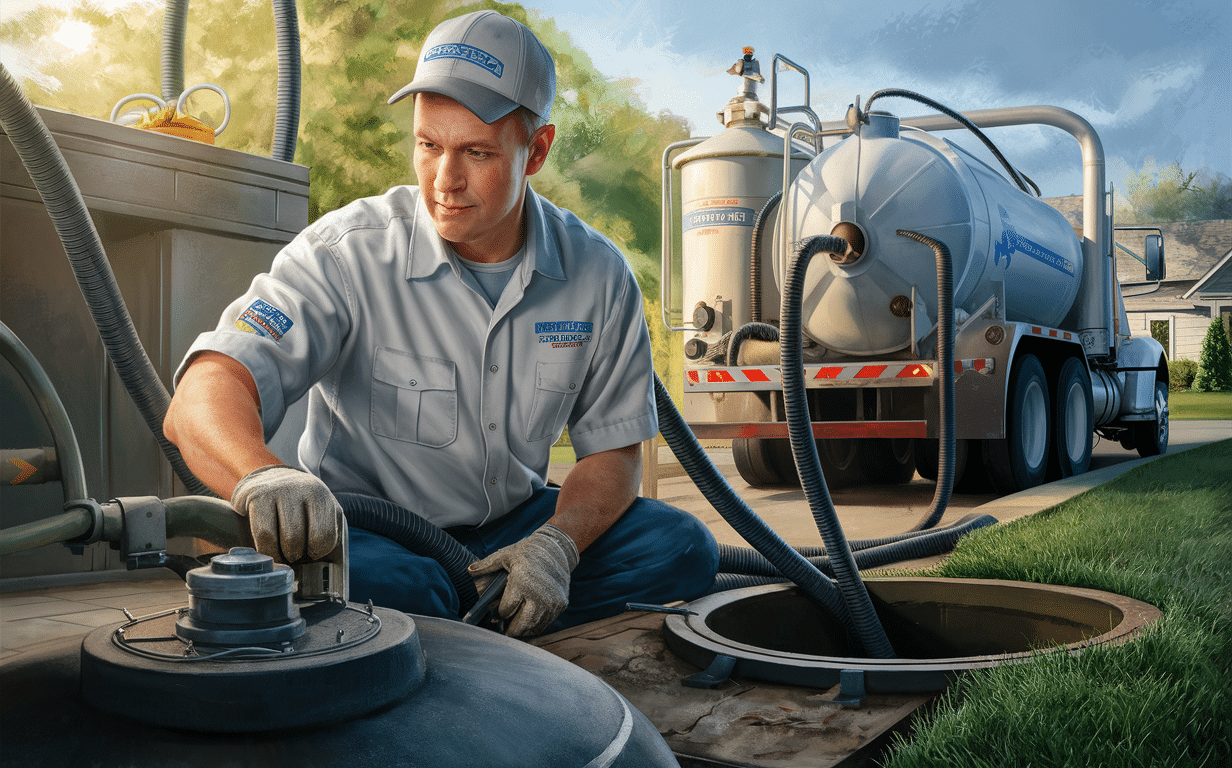
While some homeowners may consider DIY septic tank pumping to save money, it’s generally not recommended. Professional services offer several advantages:
- Safety: Handling septic waste can be hazardous, and professionals have the necessary training and equipment.
- Efficiency: Professionals can complete the job quickly and thoroughly.
- Expertise: Professionals can identify and address potential issues during the pumping process.
Keeping Records of Septic Tank Maintenance

Maintaining a record of your septic system maintenance is important for tracking pumping frequency and identifying patterns. Keep a log of the following information:
- Date of each pumping
- Name and contact information of the service provider
- Notes on any issues identified during inspections
- Recommendations for future maintenance
Environmental Impact of Septic Tank Pumping

Proper septic tank maintenance not only benefits your system but also has positive environmental implications. Regular pumping prevents untreated wastewater from contaminating local water sources and soil, protecting both human health and the environment.
Advanced Septic Tank Technologies
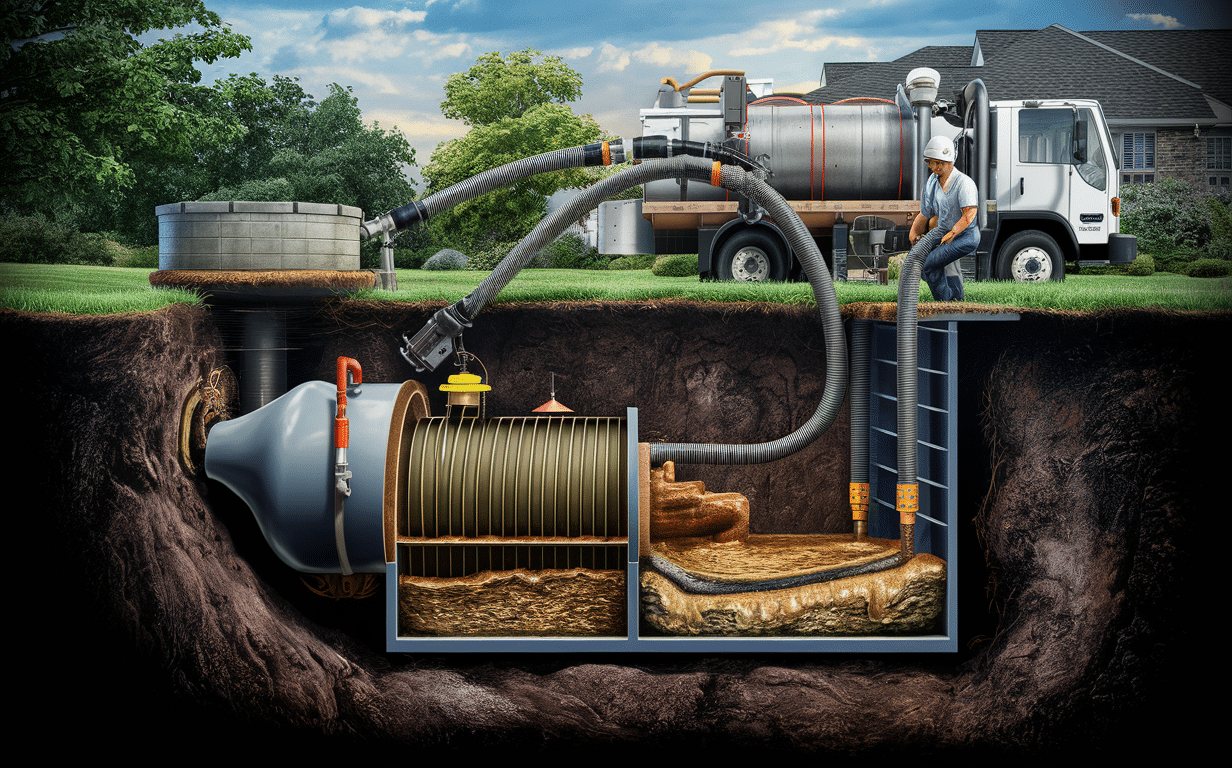
New technologies are emerging in the septic industry that offer improved performance and convenience. Some advancements include:
- Aerobic Treatment Units (ATUs): These systems introduce air into the tank to enhance bacterial activity and improve waste breakdown.
- Effluent Filters: These filters trap solids before they enter the drain field, reducing clogging and extending the system’s life.
- Remote Monitoring Systems: These systems use sensors to monitor tank levels and alert homeowners when pumping is needed.
Key Takeaway: Importance of Regular Maintenance

Regular septic tank pumping is a crucial aspect of septic system maintenance. It prevents backups, extends system life, and protects the environment. By understanding the pumping process and recognizing the signs that your tank needs attention, you can ensure your system remains in good working order.
- Septic tank pumping is a necessary process to maintain the functionality and longevity of the septic system. According to the National Association of Wastewater Technicians (NAWT), septic tanks should be pumped every 3 to 5 years (source).
- The average cost of septic tank pumping ranges from $290 to $615, according to HomeAdvisor (source).
- During the pumping process, the septic tank technician removes the sludge and scum buildup from the tank. The Environmental Protection Agency (EPA) recommends that sludge levels be maintained below 30% of the tank volume, and scum levels should be below 1 inch (source).
- Septic tank pumping typically takes 1 to 3 hours, depending on the size of the tank and the amount of sludge and scum that needs to be removed (source).
- It is important to note that septic tank pumping does not replace the need for regular maintenance, such as using bacteria additives to help break down waste and prevent clogs (source).
The Future of Septic Tank Maintenance
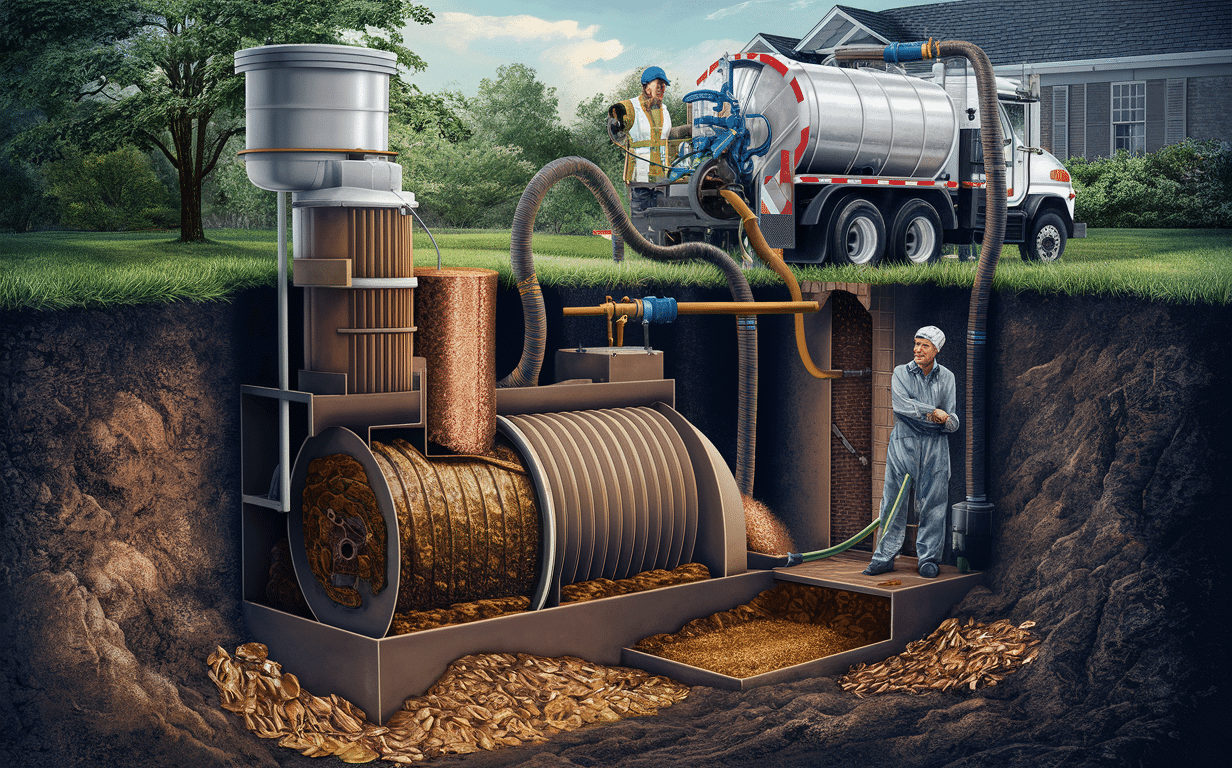
As technology continues to advance, septic tank maintenance is becoming more efficient and effective. Innovations such as remote monitoring and advanced treatment units are making it easier for homeowners to maintain their systems and prevent issues. Staying informed about these advancements can help you make the best decisions for your septic system.
Final Thoughts
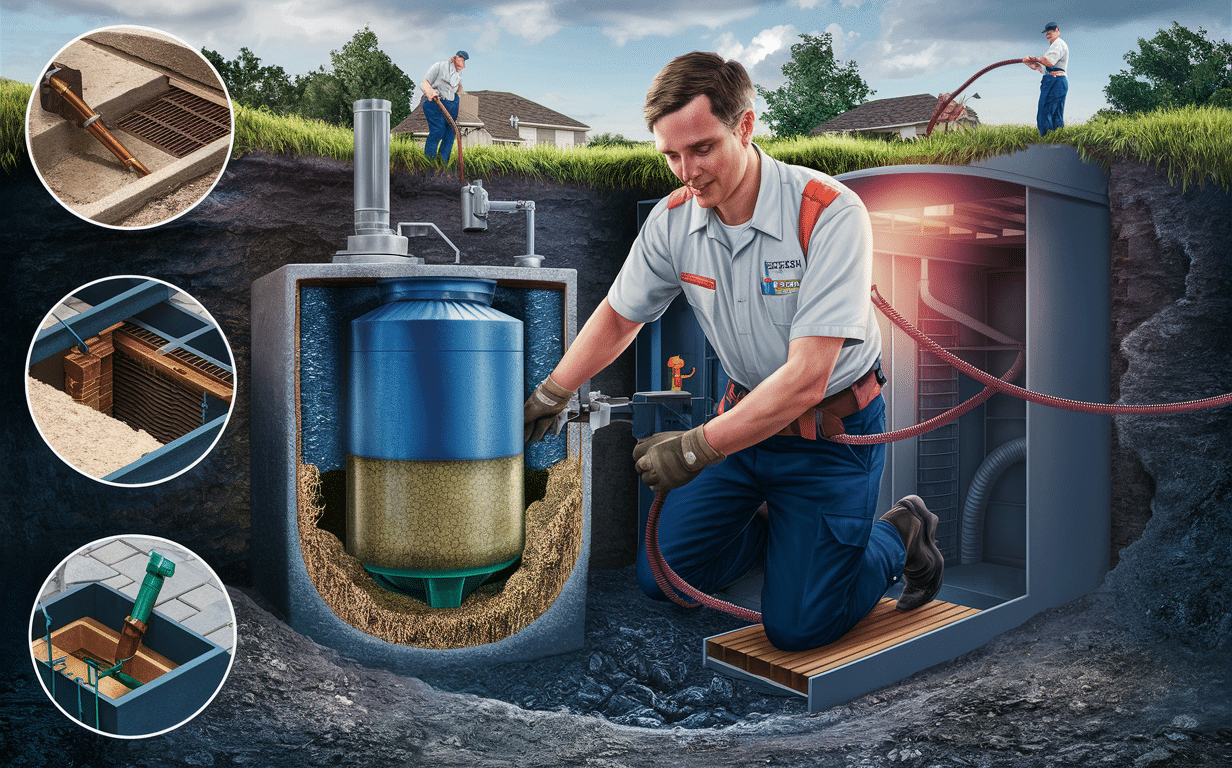
Maintaining your septic system through regular pumping is essential for preventing costly repairs and ensuring the longevity of your system. By understanding the process and choosing a reliable service provider, you can keep your septic system running smoothly for years to come.
Frequently Asked Questions
How much does septic tank pumping cost?
The cost of septic tank pumping varies depending on factors such as tank size, location, and service provider. On average, homeowners can expect to pay between $250 and $500 for a standard pumping.
How long does the septic pumping process take?
The process typically takes between 1 to 2 hours, depending on the size and condition of the tank.
Can I use additives to reduce pumping frequency?
While some additives claim to reduce the need for pumping, they are not a substitute for regular maintenance. It’s best to follow recommended pumping schedules.
What should I do if my septic system backs up?
If you experience a backup, contact a professional septic service immediately. Avoid using the plumbing until the issue is resolved.
Are there any preventative measures I can take to maintain my septic system?
Yes, you can take several measures to maintain your system, including conserving water, avoiding flushing non-biodegradable items, and scheduling regular inspections and pumping.
Maintaining your septic system doesn’t have to be daunting. With regular pumping and professional care, you can ensure your system remains efficient and trouble-free. If you need septic tank pumping services, contact United Sewer & Septic today for reliable and expert service.
You can also get your FREE estimates! Call us now.

